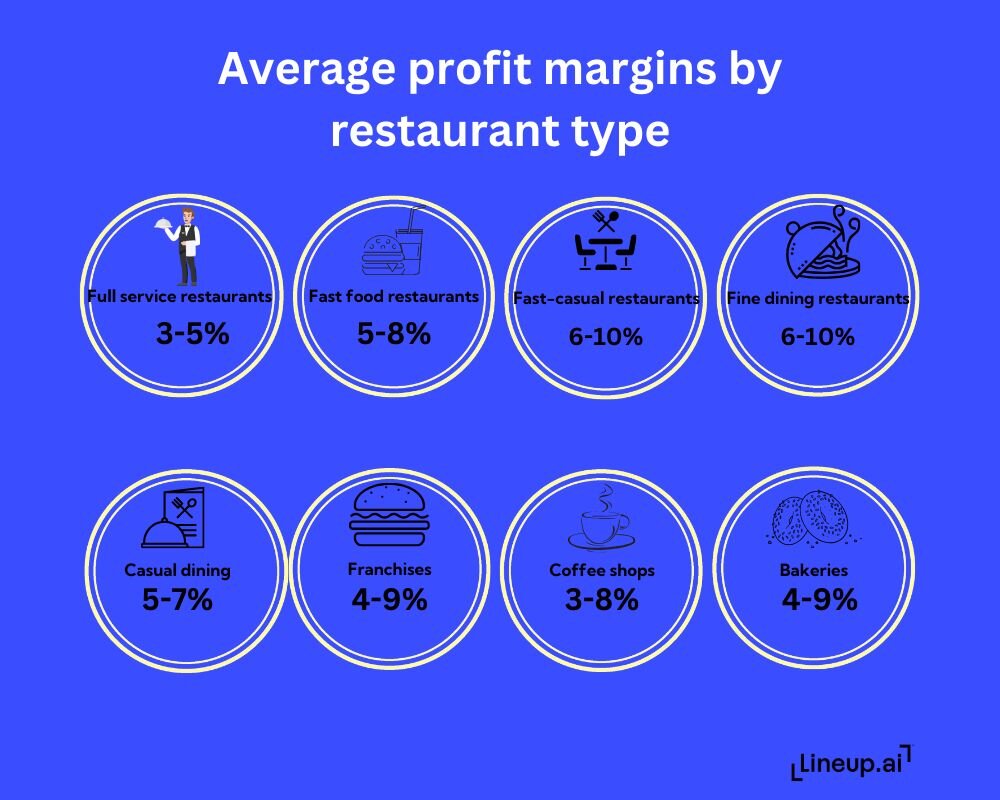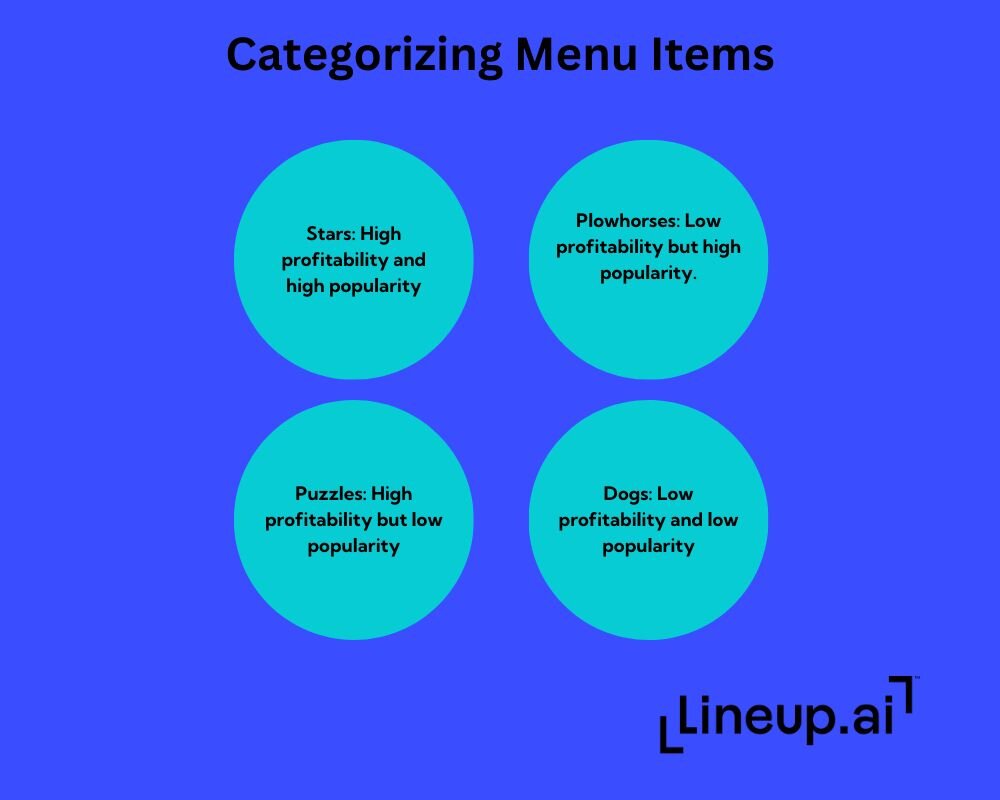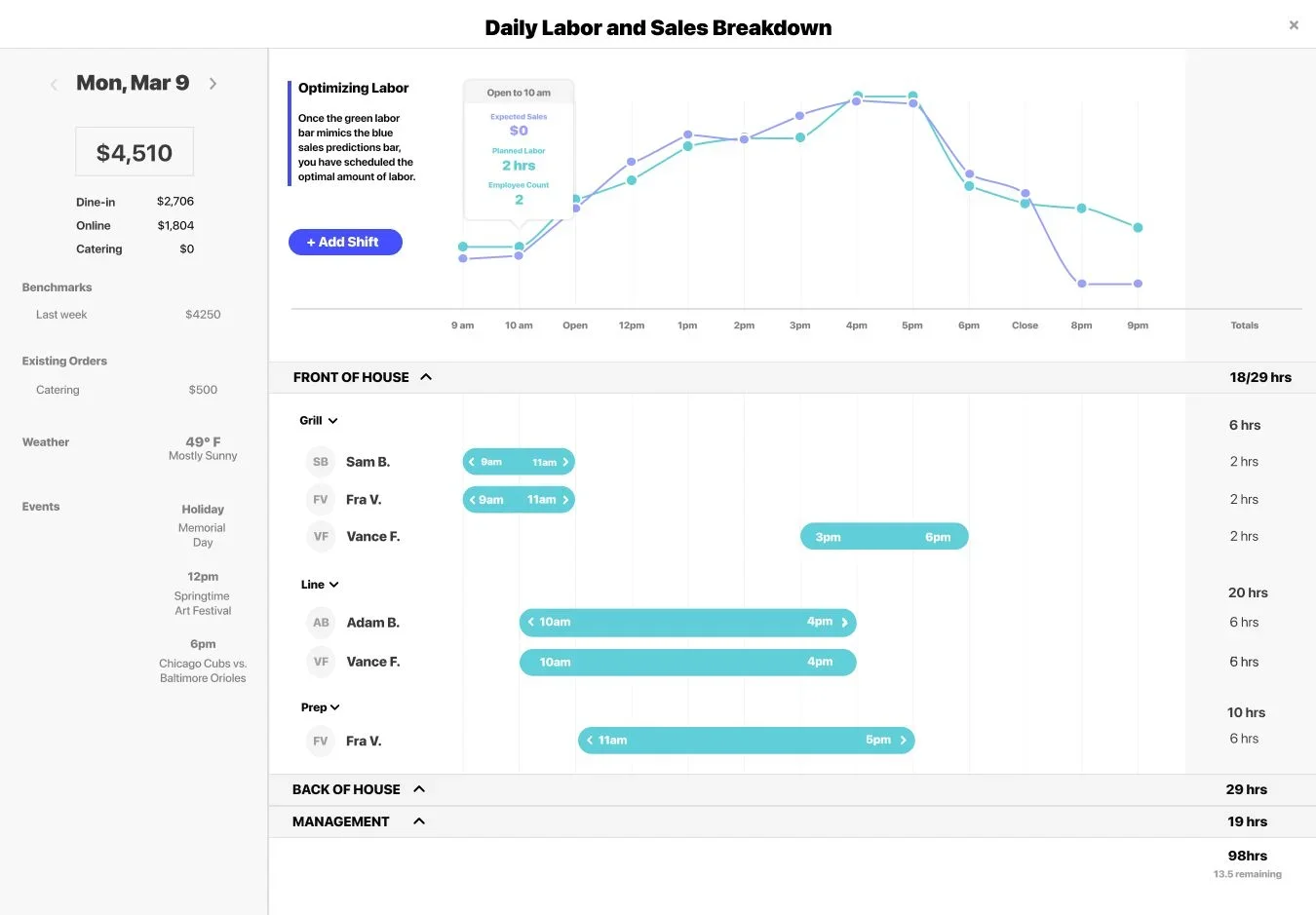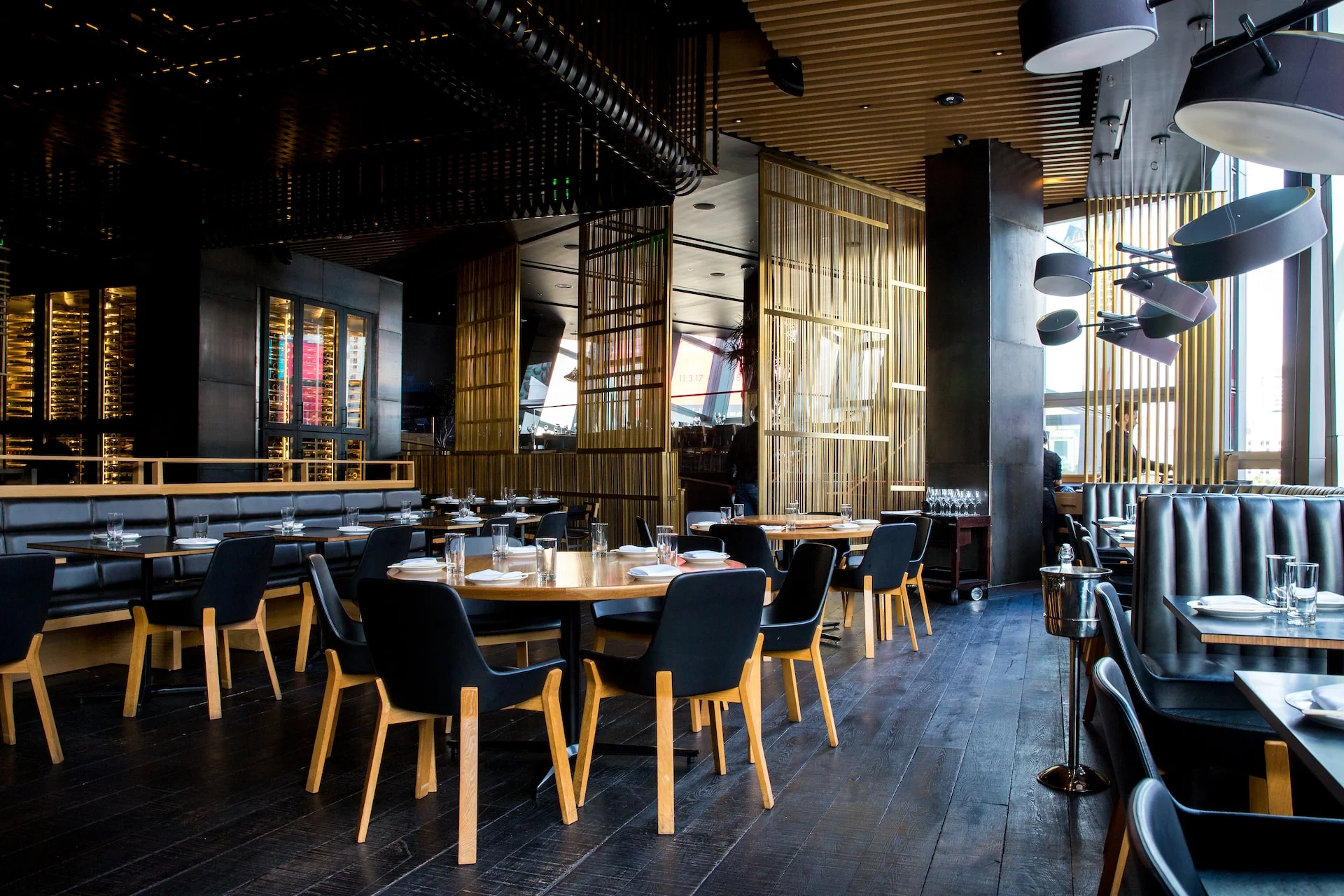Understanding profit margins is a critical aspect of success in the restaurant industry. Profit margins can provide valuable insights into the financial health and efficiency of a business, helping owners make informed decisions to improve profitability and ensure long-term growth. According to a study by the National Restaurant Association, the restaurant industry in the United States generates over $900 billion in sales annually. However, the profit margins can be slim, with many restaurants operating on margins as low as 3-5%. In this article, we’ll take a look at average restaurant profit margins and provide strategies for restaurant management to optimize them for increased profitability and sustainable growth.
What Is Restaurant Profit Margin
Profit margin is a key financial metric that represents the percentage of revenue remaining as profit after accounting for expenses.
For restaurants, average profit margins usually falls somewhere between 0-15%, while typically ranges between 3 and 5%. There are many factors that affect the average–it’s different depending on the restaurant type, location, table turnover rate, and even time of year. Restaurant revenue and sales volume aren’t always consistent, so that makes profit margins at least slightly unpredictable.
Restaurateurs will want to maintain at least average profit margins each year to avoid financial stress on their business.
Restaurant profit margin is calculated by dividing net income by net sales and is expressed as a percentage.
Different Types of Profit Margins
There are three main types of profit margins, each providing different insights into a restaurant's financial performance.
Gross Profit Margin
This margin measures the percentage of revenue left after accounting for the cost of goods sold (COGS), such as food and beverage costs.
Example: if a restaurant generates $100,000 in total sales and has $60,000 in COGS, the gross profit margin would be 40%.

Operating Profit Margin
This margin takes into account additional operating expenses, such as labor and overhead costs. It is calculated by dividing operating income (gross profit minus operating expenses) by net sales.
Example: if a restaurant has a gross profit of $40,000 and operating expenses of $30,000, the operating profit margin would be 25%.

Net Profit Margin
This margin considers all restaurant expenses, including taxes and interest, providing a comprehensive understanding of a restaurant's profitability. The average net profit margin for restaurants ranges between 2% to 6%, and varies based on restaurant type.
It is calculated by dividing net income (operating income minus taxes and interest) by net sales.
Example: if a restaurant has an operating income of $10,000 and taxes and interest of $2,000, the net profit margin would be 8%.

Restaurant Profit Margin Formula
Determining your restaurant's profitability is a fairly straightforward calculation.
Restaurant Profit Margin = (Total Revenue - Expenses) / Total Revenue

Total Revenue, or gross sales, is the total amount of money your restaurant generates before accounting for expenses.
Expenses include the costs associated with generating revenue–things like ingredient costs, labor, rent, utilities, technology, and equipment.
Here is one example: Imagine you run a restaurant within a hotel and want to calculate its profit margin for the past year. Based on your POS data, the restaurant generated $10 million in sales. The expenses were $4 million for food, $4 million for labor, $1 million for rent and utilities, and $500,000 for technology, appliances, and other miscellaneous costs, totaling $9.5 million in expenses.
Total Revenue = $10,000,000
Expenses = $9,500,000
To calculate the profit margin, subtract your expenses from your revenue, then divide that number by total revenue: $10,000,000 - $9,500,000) / $10,000,000 = $500,000 / $10,000,000 = 0.05.
According to this calculation, this restaurant had a profit margin of 5% last year.
What Are the Average Restaurant Profit Margins For Different Types of Restaurants
Average restaurant profit margin typically ranges between 3 - 5 %, but it can vary widely depending on factors such as location, cuisine type, and size. Here are some average profit margins for different types of restaurants:
- Full-service restaurants: Profit margins for full-service restaurants typically range between 3% to 5%.
- Fast-food or quick-service restaurants (QSR): Fast-food restaurants usually have profit margins between 5% to 8%.
- Fine dining restaurants: These high-end establishments can have profit margins of 6% to 10%, but this can vary greatly depending on factors such as location and clientele.
- Casual dining restaurants: Profit margins for casual dining restaurants generally fall in the 5% to 7% range.
- Fast-casual restaurants: These establishments, which combine elements of fast food and casual dining, generally have profit margins in the range of 6% to 10%.
- Franchise restaurants: Profit margins for franchise restaurants can vary widely depending on the brand or service level, but they typically range between 4% to 9%.
- Coffee shops and cafes: Profit margins for coffee shops and cafes can vary greatly depending on factors like location and menu offerings, but they typically range between 3% to 5%.
- Bakeries: Profit margins for bakery businesses generally fall in the 4% to 9% range.
- Food trucks: Food truck businesses often have profit margins between 6% to 9%.
Please note that these figures are approximate and subject to change with the market. Consider these benchmarks while you set your goals.

Tips for Restaurants To Optimize Profit Margin
Optimizing restaurant profit margins involves improving operational efficiency and increasing revenue while controlling restaurant expenses. It’s best to take into consideration anything that might impact your bottom line.
Here are some strategies to help you optimize your restaurant's profit margins.
Menu Engineering
Analyze your menu to identify the most profitable and popular items. Adjust prices or portion sizes, promote high-margin items, and consider removing low-performing dishes to maximize profits.
Your menu is the reason your patrons want to dine at your establishment, it's best to tailor it to what people enjoy most. Learn more about menu engineering.

Inventory Management
Implement an efficient inventory management system to reduce food waste and spoilage, and negotiate with suppliers to get the best prices for ingredients and other items. Not only is reducing waste good for your bottom line, it's good for the environment as well!
Download our free restaurant inventory template.
Labor Cost Control
Optimize your staffing levels to ensure you have the right number of employees during peak and off-peak hours. Train your staff to improve efficiency and reduce turnover, which can save on hiring and training costs. Each staff member is important and has a direct impact on your business. Learn about strategies to reduce labor cost in a restaurant.
Reduce Overhead Costs
Regularly review your expenses, such as rent, utilities, and insurance, and look for ways to reduce total costs without compromising quality. Overhead is a big key to a profitable restaurant.
Improve Customer Experience
Enhance your restaurant's service quality, ambiance, and overall dining experience to attract more customers and encourage repeat visits. It's difficult to overstate the importance of customer experience.
Leverage Restaurant Technology
According to a report, 76% of operators recognize that embracing technology provides a competitive advantage, yet many acknowledge that their restaurants still have room for improvement in adopting more tech solutions. Consequently, many of them are increasing their investments in technological solutions, such as restaurant scheduling software, online ordering platforms, sales and labor forecasting technology, inventory management and reservation systems, to streamline operations and enhance the customer experience.
Check out our roundup of the best restaurant management software.
Diversify Revenue Streams
According to industry insights, 50% of restaurant owners are diversifying their revenue streams by venturing into grocery, retail, and meal kits. Consider expanding your business with catering services, takeout options, private events, or branded merchandise.
Exploring these avenues can open up new opportunities for revenue, especially if approached with creativity and strategic targeting.
Marketing and Promotions
Develop a strong marketing strategy to attract new customers and encourage repeat business. Use social media, email marketing, and targeted promotions to reach your audience and build brand awareness. From happy hour to loyalty programs, there are plenty of great options available.
Monitor and Analyze Performance
Regularly review your restaurant's financial performance and key performance indicators (KPIs) to identify areas for improvement and make informed decisions.
Adapt to Industry Trends
Stay informed about the latest trends in the restaurant industry, such as food delivery, plant-based options, and sustainability initiatives, and adapt your business to meet changing consumer demands.
How can Lineup.ai Help?
Using AI-powered sales and labor forecasts, Lineup.ai integrates with your POS system and helps restaurants better understand their total sales and how it stacks up to labor expenses. We combine historical sales data with forward-looking data like weather and events, then use an advanced machine learning algorithm to deliver sales and labor forecasts.
The software includes suggested and automated scheduling, team communication tools, and analytics reporting. Everything your restaurant needs to control labor costs, deliver outstanding customer experiences, keep employees happy, and ultimately, increase your profit margins.

FAQ
Why are restaurant profit margins so low?
Restaurant profit margins are often low due to high operating costs, such as rent, utilities, labor, and food costs, as well as intense competition. Additionally, the perishable nature of food inventory and fluctuations in food prices can contribute to the low profit margins in the industry.
What are the three things that affect profit margins?
Three key factors affecting profit margins in the restaurant industry are:
- Cost of Goods Sold (COGS): The cost of ingredients, labor, and other direct expenses that go into producing menu items.
- Overhead expenses: Fixed and variable costs such as rent, utilities, marketing, and equipment maintenance.
- Revenue: The amount of money generated through sales, which can be affected by factors like menu pricing, customer traffic, and upselling techniques.
What are the benefits of a high profit margin in a restaurant?
A high profit margin in a restaurant offers several benefits, including:
- Financial stability: Higher profit margins allow restaurant owners to maintain a stable cash flow and cover unexpected expenses.
- Increased competitiveness: Restaurants with higher profit margins can invest in better ingredients, marketing, and other improvements to attract and retain customers.
- Growth opportunities: With higher profits, restaurant owners can expand their business, open new locations, or invest in new concepts.
- Flexibility: Higher profit margins provide restaurants with more financial cushion to withstand market fluctuations and economic downturns.
What is average restaurant profit margin by country?
The average restaurant profit margin varies across regions. In the U.S. and Europe (including the UK), the median EBITDA margins for public foodservice companies are 12% and 13% respectively. Comparatively, Japan's EBITDA margin stands at 3%, while emerging markets like the KSA, Mexico, and the Philippines show a median restaurant EBITDA margin of 17%.
What are the most profitable restaurants?
Highly franchised Quick-Service Restaurant (QSR) systems are reported to have the highest profitability margins in the restaurant industry, followed by highly franchised Fast Casual establishments, and then highly franchised Casual Dining restaurants. Comparatively, the lightly franchised categories, including QSR, Fast Casual, and Casual Dining, exhibit lower profitability margins.

The team at Lineup.ai is composed of seasoned professionals who hold deep insights into the unique challenges and pain points of the restaurant industry, and are equally skilled in artificial intelligence, machine learning, and data analytics. This fusion of expertise enables Lineup.ai to create cutting-edge AI solutions specifically tailored for the restaurant sector. The technical and analytical prowess of the team, combined with a deep understanding of the unique challenges faced by restaurants, forms the cornerstone of the company's innovation. The team at Lineup.ai also excels in communicating the benefits and applications of AI and machine learning to businesses, ensuring clients fully leverage the capabilities of these solutions.
More about the author